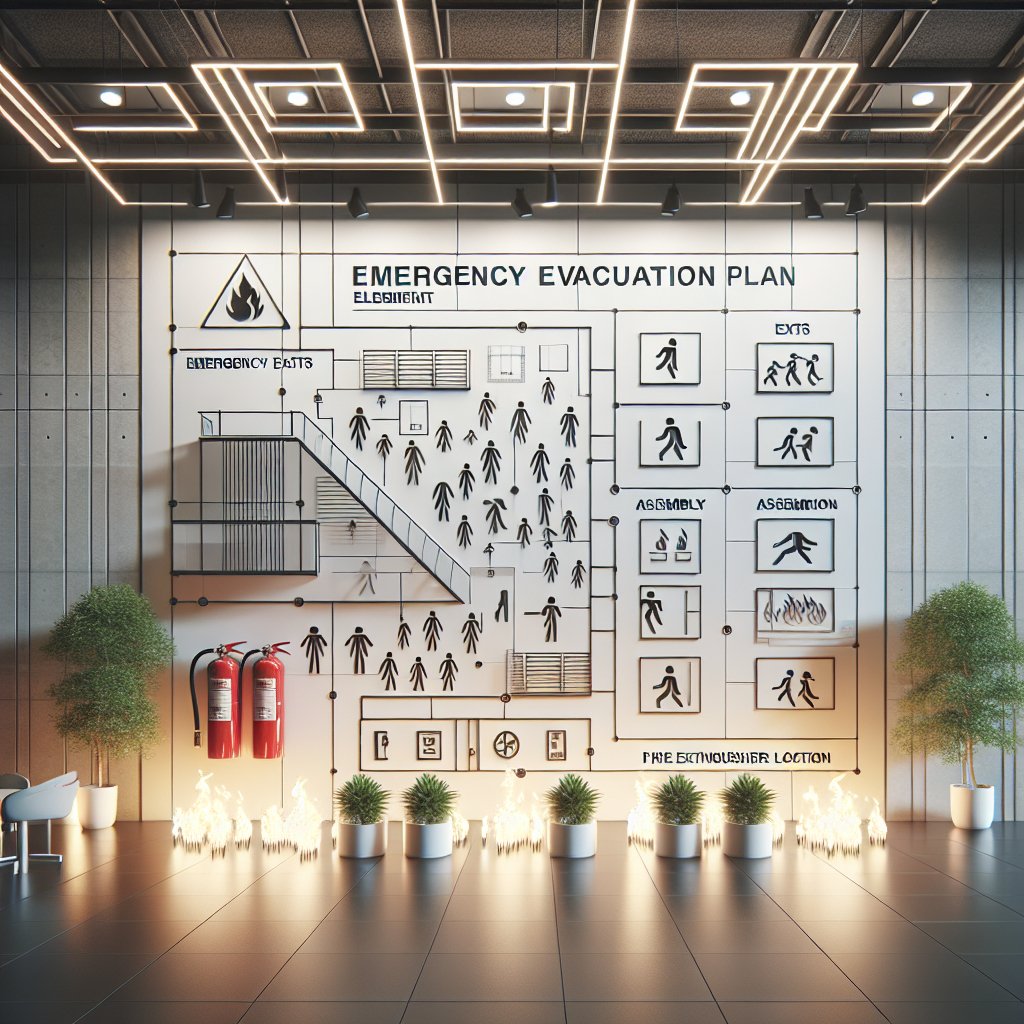Creating an effective emergency evacuation plan is crucial for ensuring the safety and well-being of individuals in various settings, whether it be at home, in the workplace, or in public spaces. An evacuation plan outlines the procedures to follow in the event of an emergency, such as a fire, natural disaster, or other crisis situations. This article will explore the essential components of an effective evacuation plan and provide practical steps to develop one that meets the needs of your specific environment.
Understanding the Importance of an Evacuation Plan
Having a well-structured evacuation plan is not just a regulatory requirement; it is a vital aspect of emergency preparedness. The importance of an evacuation plan can be summarized in several key points:
- Safety of Individuals: The primary goal of an evacuation plan is to ensure the safety of all individuals present in a building or area during an emergency. A clear plan helps to minimize confusion and panic, allowing for a more orderly evacuation.
- Time Efficiency: In emergencies, every second counts. An effective evacuation plan can significantly reduce the time it takes for individuals to exit a building or area, potentially saving lives.
- Legal Compliance: Many jurisdictions require businesses and public facilities to have an evacuation plan in place. Compliance with these regulations not only avoids legal repercussions but also demonstrates a commitment to safety.
- Preparedness for Various Scenarios: An effective plan prepares individuals for a range of emergencies, from fires to earthquakes, ensuring that everyone knows what to do regardless of the situation.
Key Components of an Effective Evacuation Plan
To create an effective emergency evacuation plan, several key components must be considered. Each element plays a crucial role in ensuring that the plan is comprehensive and functional.
1. Risk Assessment
The first step in developing an evacuation plan is to conduct a thorough risk assessment. This involves identifying potential hazards that could necessitate an evacuation. Consider the following:
- Types of Emergencies: Evaluate the types of emergencies that are most likely to occur in your area, such as fires, floods, earthquakes, or active shooter situations.
- Vulnerable Populations: Identify individuals who may require additional assistance during an evacuation, such as the elderly, disabled, or those with medical conditions.
- Building Layout: Understand the layout of the building, including exits, stairwells, and assembly points. This knowledge is essential for creating an effective evacuation route.
2. Designated Evacuation Routes
Once the risks have been assessed, the next step is to establish designated evacuation routes. These routes should be clearly marked and easily accessible. Consider the following:
- Multiple Exits: Ensure that there are multiple exits available to prevent bottlenecks during an evacuation. This is especially important in larger buildings.
- Clear Signage: Install clear and visible signage indicating evacuation routes and exits. Signs should be easy to read and understand, even in low visibility conditions.
- Obstruction-Free Pathways: Regularly inspect evacuation routes to ensure they are free of obstructions and hazards that could impede movement during an emergency.
3. Communication Plan
Effective communication is vital during an emergency. A communication plan should outline how information will be disseminated to individuals during an evacuation. Key elements include:
- Alert Systems: Implement an alert system to notify individuals of an emergency. This could include alarms, public address systems, or mobile notifications.
- Designated Spokesperson: Appoint a designated spokesperson to provide updates and instructions during an emergency. This person should be trained in crisis communication.
- Regular Drills: Conduct regular evacuation drills to familiarize individuals with the plan and ensure that communication systems are functioning effectively.
4. Assembly Points
After evacuating the building, individuals should know where to gather. Designating assembly points is crucial for accounting for everyone and ensuring their safety. Consider the following:
- Location: Choose assembly points that are a safe distance from the building and away from potential hazards.
- Signage: Clearly mark assembly points with signs to guide individuals to the correct location.
- Accountability Procedures: Establish procedures for accounting for individuals at assembly points, such as roll calls or check-in systems.
5. Training and Education
Training and education are essential components of an effective evacuation plan. All individuals should be familiar with the plan and their roles during an emergency. Key aspects include:
- Training Sessions: Conduct training sessions to educate individuals about the evacuation plan, including routes, assembly points, and emergency procedures.
- Specialized Training: Provide specialized training for individuals with specific responsibilities, such as floor wardens or first aid responders.
- Continuous Education: Regularly update training materials and conduct refresher courses to keep everyone informed about any changes to the plan.
Implementing and Reviewing the Evacuation Plan
Once the evacuation plan has been developed, it is essential to implement it effectively and review it regularly to ensure its continued relevance and effectiveness.
1. Implementation
Implementing the evacuation plan involves several steps:
- Dissemination: Distribute the evacuation plan to all individuals within the building or area. Ensure that everyone has access to a copy and understands its contents.
- Visible Posting: Post copies of the evacuation plan in common areas, such as break rooms, hallways, and near exits, to serve as constant reminders.
- Engagement: Encourage individuals to ask questions and provide feedback on the plan to foster a culture of safety and preparedness.
2. Regular Drills
Conducting regular evacuation drills is crucial for ensuring that individuals are familiar with the plan and can execute it effectively in an emergency. Consider the following:
- Frequency: Schedule drills at least twice a year, or more frequently if necessary, to keep the plan fresh in everyone’s mind.
- Variety: Vary the scenarios during drills to simulate different types of emergencies and test the plan’s flexibility.
- Debriefing: After each drill, conduct a debriefing session to discuss what went well and identify areas for improvement.
3. Review and Update
Regularly reviewing and updating the evacuation plan is essential to ensure its effectiveness. Consider the following:
- Feedback Incorporation: Incorporate feedback from drills and real-life emergencies to improve the plan.
- Changes in Environment: Update the plan to reflect any changes in the building layout, occupancy, or potential hazards.
- Regulatory Compliance: Stay informed about any changes in regulations or best practices related to emergency preparedness and adjust the plan accordingly.
Conclusion
Creating an effective emergency evacuation plan is a critical step in ensuring the safety and well-being of individuals in any environment. By understanding the importance of an evacuation plan, assessing risks, establishing clear routes, and implementing training and drills, organizations and individuals can be better prepared for emergencies. Regular reviews and updates will ensure that the plan remains relevant and effective, ultimately saving lives and minimizing chaos during a crisis. Prioritizing safety through a well-structured evacuation plan is not just a responsibility; it is a commitment to protecting those around us.




